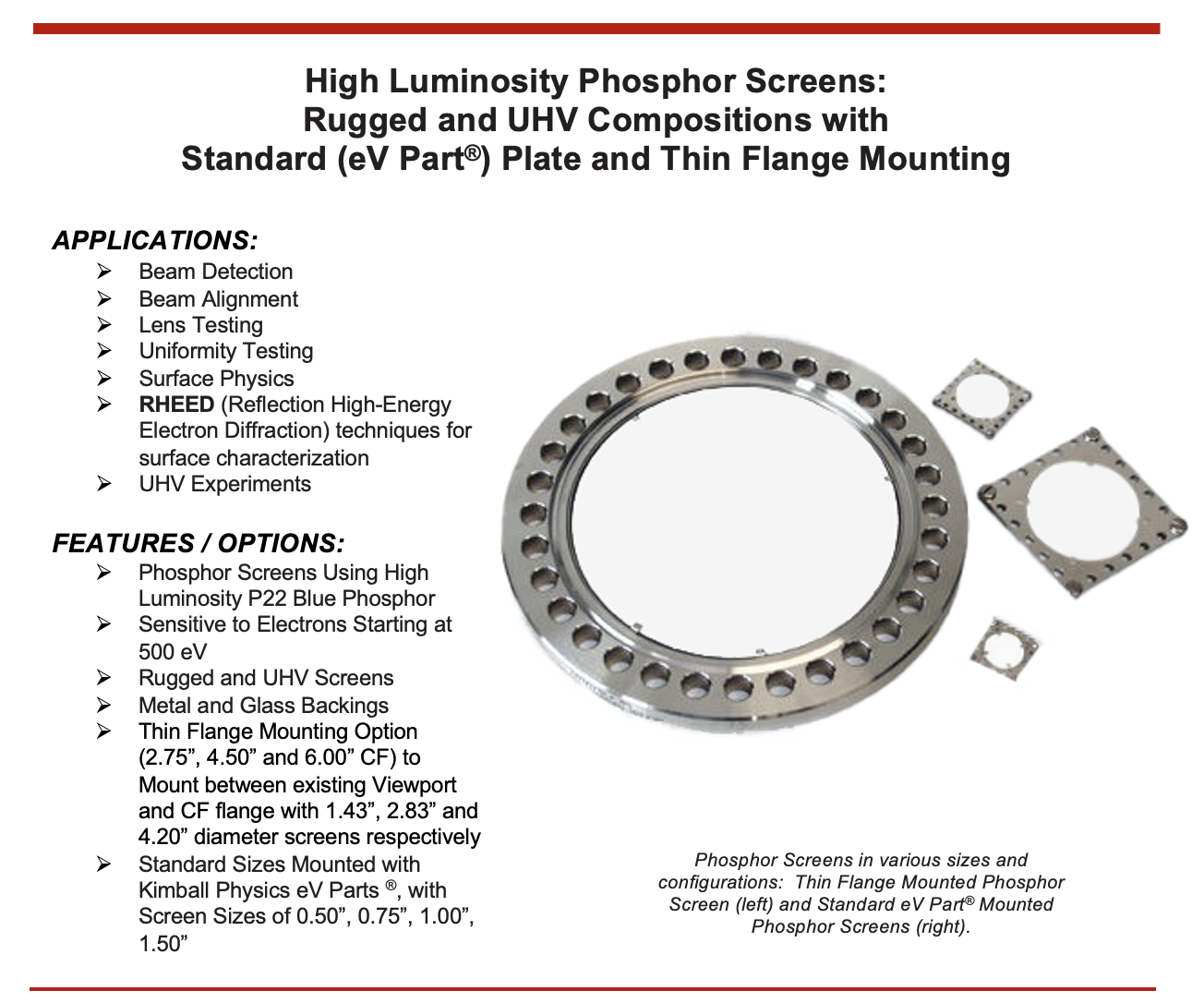
Kimball Physics Phosphor Screens are made of a high luminosity phosphor (Blue P22- ZnS: Ag). Interestingly, phosphor does not contain phosphorus.
The screens are sensitive to electrons and will emit photons (luminescence) starting at approximately 500 eV with a threshold of 1 x 10-7 A/cm2 at 500 eV. The maximum recommended input beam power density is 1 Watt/cm2. Two general types of phosphor screens are made by Kimball Physics: Rugged Phosphor Screens and UHV Phosphor Screens.
Rugged Phosphor Screens (Kimball Physics PHOS-RP22) are easy to handle and unusually resistant to mechanical damage and rough handling. In these ruggedized screens, phosphor is bonded to either metal or glass backings using a bonding agent which has a low but non-zero vapor pressure. Due to the binder, the rugged phosphor is only suitable for vacuum pressures down to 10-8 torr (at the lower end of this operating range, some outgassing may be observed).
The rugged screens are particularly suited for use in experimental vacuum systems. Rugged screens have a phosphor thickness of approximately 75 μm. They are fabricated from high luminosity blue phosphor (P-22), available with either stainless steel 304 or glass backings. They are bakeable to 200oC.

The phosphor screens are available in two basic configurations: 1) Phosphor Screen diameters of 0.50”, 0.75”, 1.00” and 1.50” mounted on Square eV Part Plates with Round Center holes or 2) Phosphor Screen diameters of 1.43”, 2.83” and 4.20” that are secured in the apertures of Thin Flange Mounts (2.75”, 4.50”, 6.00” CF respectively). We also refer to our CF Flange Mounted Phosphor Screens as RHEED Screens.
UHV Phosphor Screens (Kimball Physics PHOS-UP22), with no binder, are compatible with ultra-high vacuums (UHV) better than 1 x 10-8 torr. Although these screens do well in an UHV environment, they are more fragile and require greater care when handling. Since the phosphor coating is delicate, it can be easily damaged from touching the UHV phosphor coating. Also, shock from knocking or dropping the screen may cause the phosphor coating to flake off. Standard UHV screens are shipped with a stainless-steel protective cover. The thickness of the UHV phosphor ranges from 50 μm to 70 μm.
The UHV screens are fabricated from high luminosity blue phosphor (P-22). They are bakeable to 350oC and are available in phosphor screen diameters of 0.50”, 0.75”, 1.00” and 1.50” for eV Part Plate Mounts and 1.43”, 2.83” and 4.20” for Thin Flange Mounts (2.75”, 4.50”, 6.00” CF respectively).
During fabrication of the Phosphor Screens, the phosphor can be deposited either on a 0.012 or 0.025 inch thick 304 stainless steel plate (SS) or on 0.030-inch-thick conductive glass (GL).
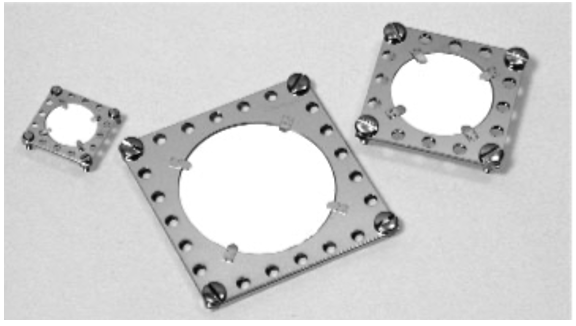
Examples of various sized Standard Phosphor Screens (0.7”, 1.4” and 2.0” Edge length) with conductive glass (0.5”, 1.0”, 1.5” diameter) screens mounted in the central aperture of two adjacent square eV Part® plates. Tabs present to secure screens and conduct away charge.
The screens can be configured as: 1) square or custom shaped stainless steel plates (with deposition directly on the plate- these are available custom), 2) phosphor deposited on round SS or glass disk, with the phosphor screen disk held in place with between two adjacent Kimball Physics eV Part Square Plates with round center holes, or 3) the phosphor screen is supported within the round aperture of a CF Thin Flange fitting that is discussed below.
The screens with phosphor deposited on metal surface must be viewed from the electron impact side (since the metal is opaque) with their frames typically mounted in vacuum at an angle and in view behind the viewport.
The phosphor screens deposited on glass can be viewed from either side (since the glass is transparent). These screens can be either be: 1) mounted on a square stainless steel (eV Part compatible) perforated plates with a round central aperture or 2) mounted in a Thin Flange fixture. The Thin Flange fixture with the phosphor screen is then mounted (sandwiched) between two CF flanges, such as the vacuum chamber port flange and a viewport flange.
Custom Phosphor Screens can be deposited on almost any metal, glass, or ceramic surface on a special-order basis. Round screen diameters can range from 10 mm diameters, up to more than 200 mm in diameter. Rugged phosphor screens can be made in a variety of custom sizes and shapes; rectangles, strips, and patterned shapes are possible; edge definition is better than 100 micrometers. Custom screens can be made up even in quantities of one. Contact Kimball Physics Engineering for more information.
Rugged and UHV screens typically deposited on various sized round stainless steel disks or round disks of conductive glass and then mounted in the center round hole of a square stainless steel eV Part plates using tabs to secure the disk and also conduct away charge from the screen (see figure previous page)
The Rugged phosphor screens can also be deposited directly on an eV Plate.
The Thin Flange-Mounted Phosphor Screen, that we commonly refer to as RHEED Phosphor Screens because they are frequently used for Reflection High Energy Electron Diffraction techniques for surface characterization, is designed for in-vacuum mounting (see figure below). It is typically used in conjunction with a separate ConFlat® CF viewport flange. The Thin Flange is used to mount (sandwich) the phosphor screen between a separate CF Viewport and the CF flange on the vacuum chamber port. The Thin Flange has CF knife-edges on both sides that engage to copper gasket (or similar) to create the seal when the bolts are tightened. The gasket crushing bolts pass through the Thin Flange without putting any force on it.
The Thin Flange-Mounted Phosphor Screens come in 2.75” CF, 4.50” CF and 6.00” CF flange sizes. Screens for 8.00” CF are available as a special option. All Thin Flanges are 0.4 inch thick, double-sided (knife-edges on both sides), and have double-density clear bolt holes. Please refer to the “Thin Flange” specifications in the in the Multi-CF Fittings section of the website.
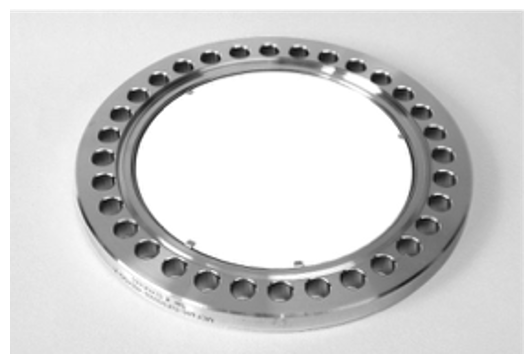
Thin Flange 6.00” CF with conductive glass backed phosphor screen mounted in the flange aperture. Small tabs secure the screen and conduct charge from the screen to the flange and then to ground.
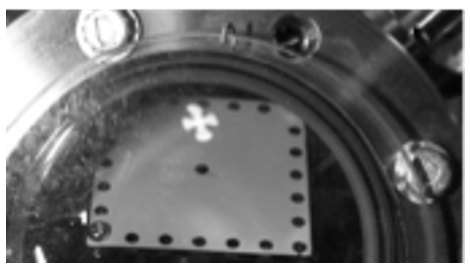
Maltese-cross shaped spot from an unfocused LaB6 cathode seen on a custom phosphor screen inside the vacuum chamber.
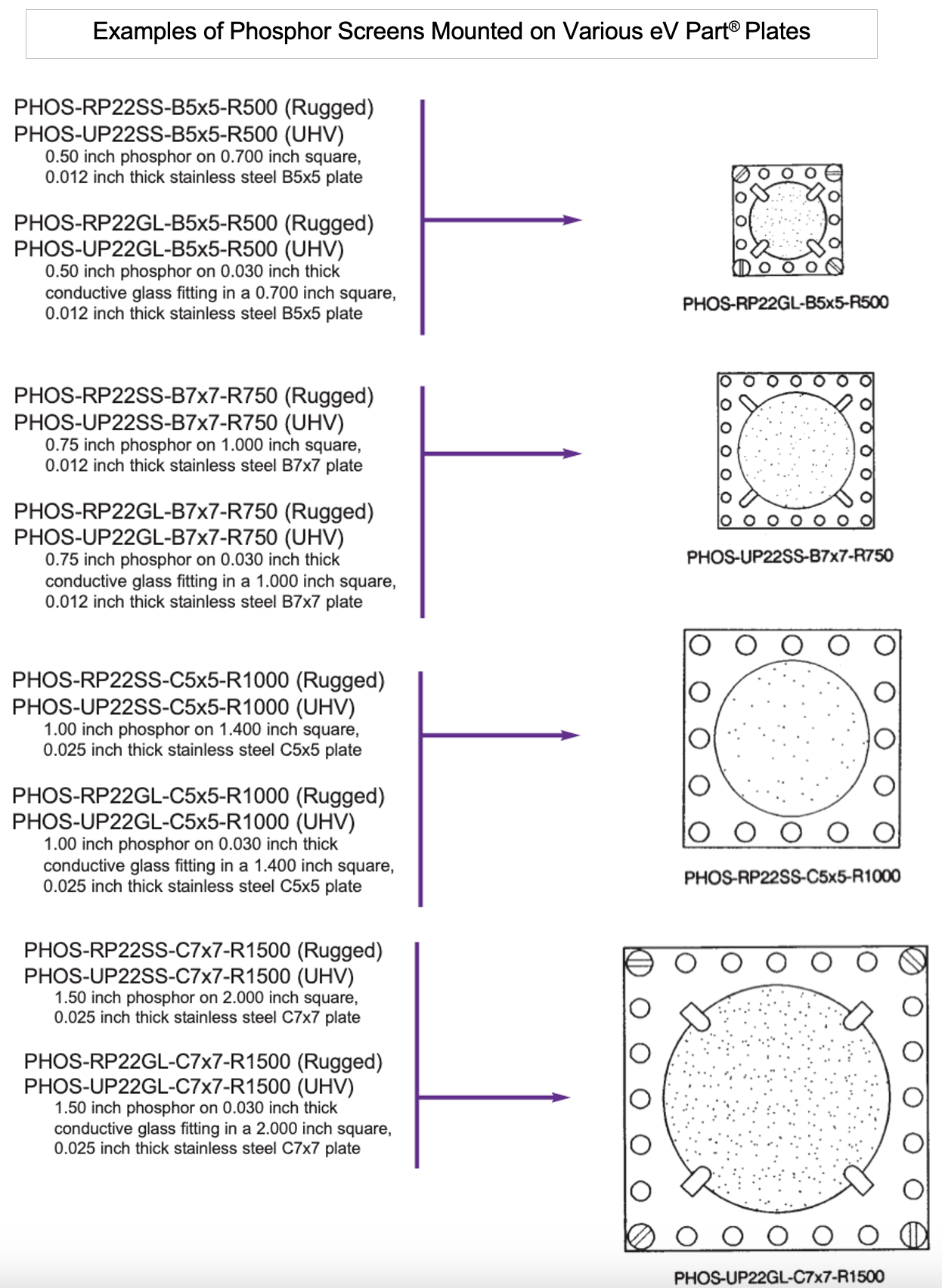
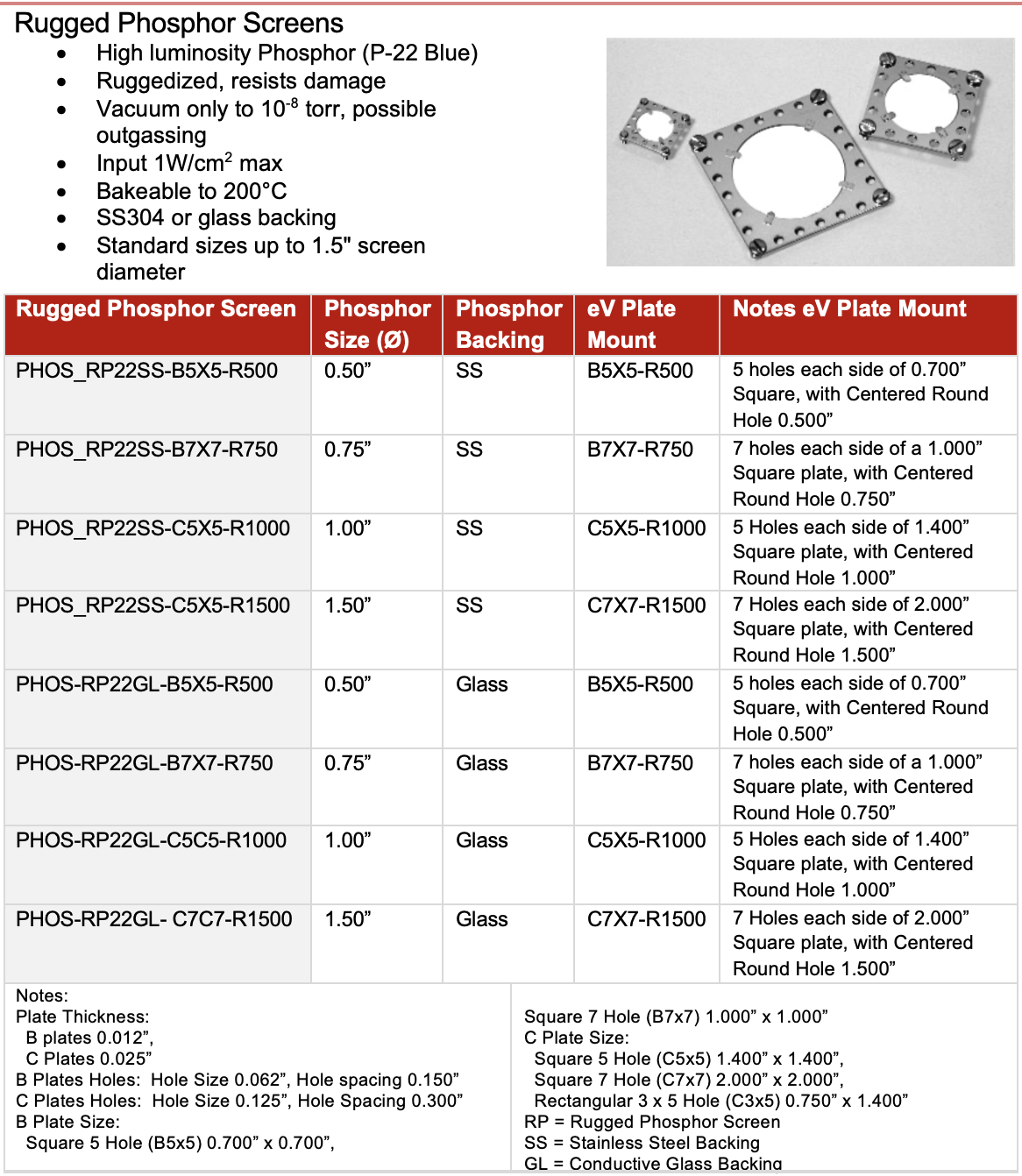
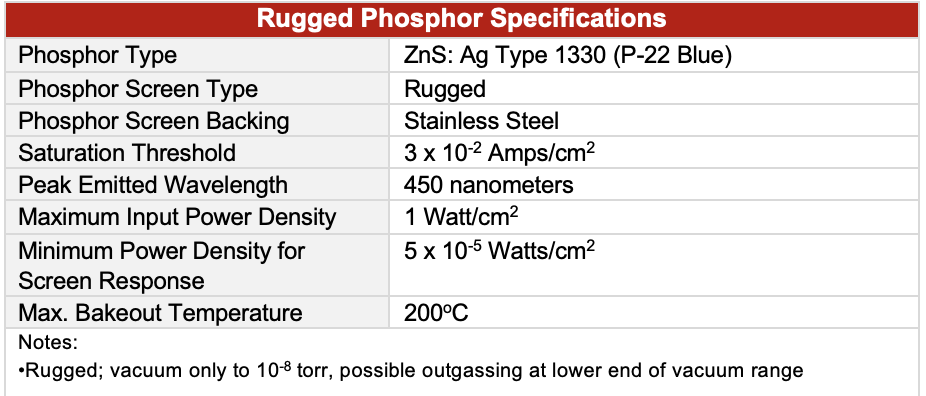
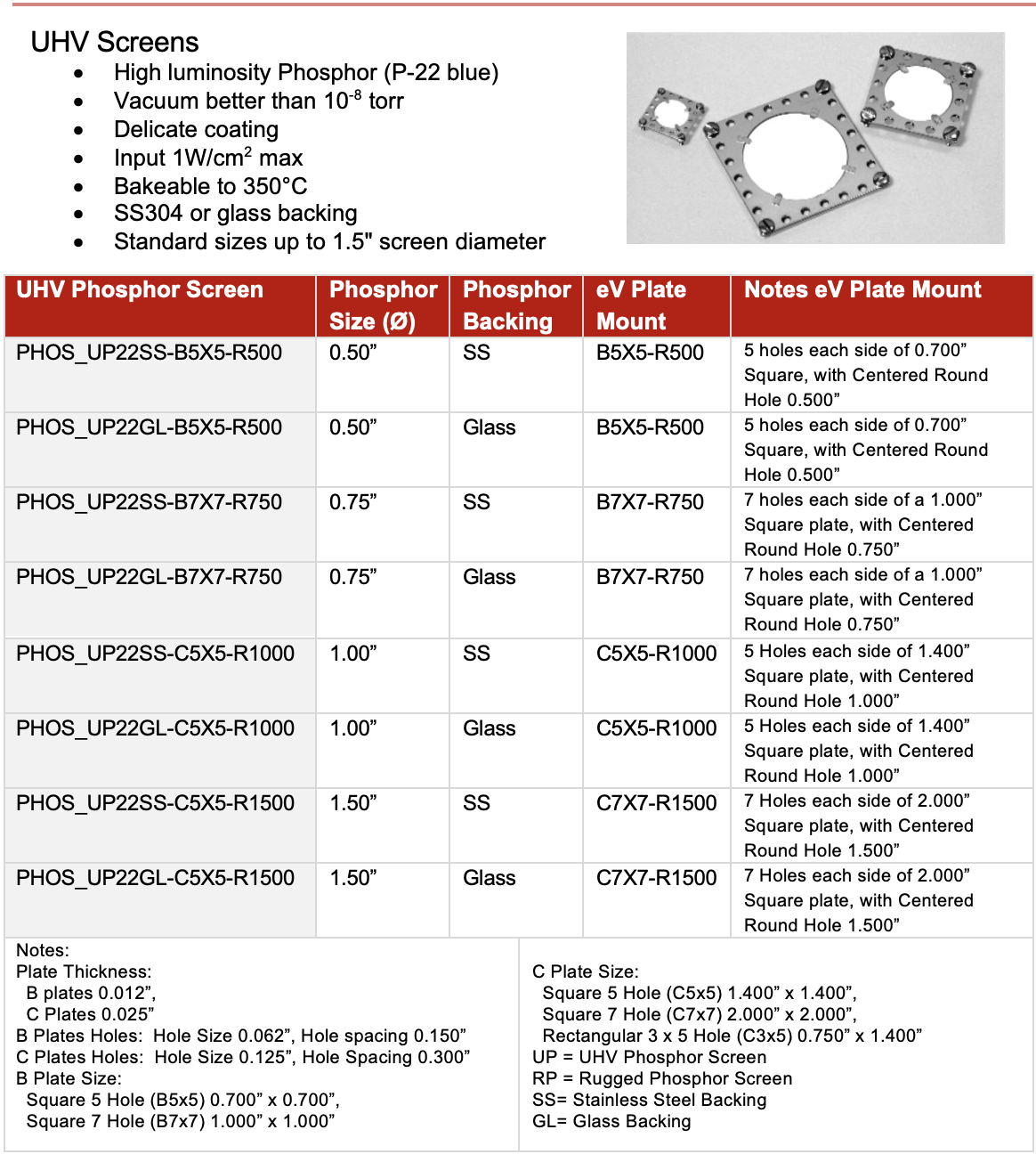
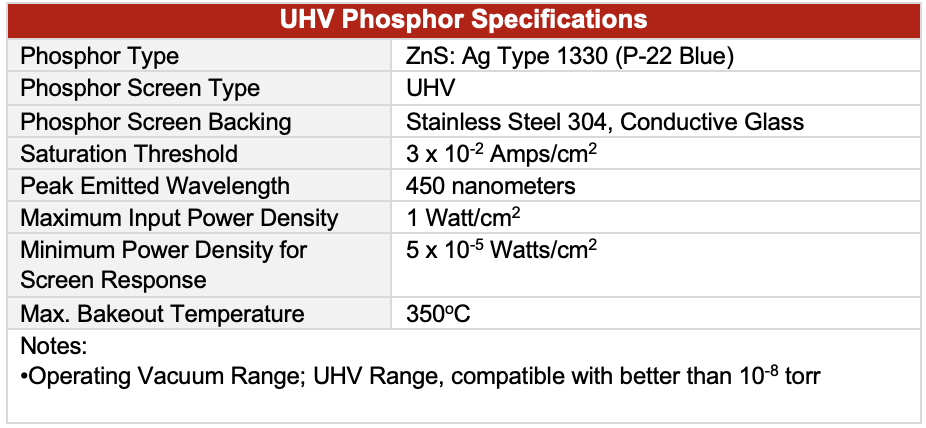
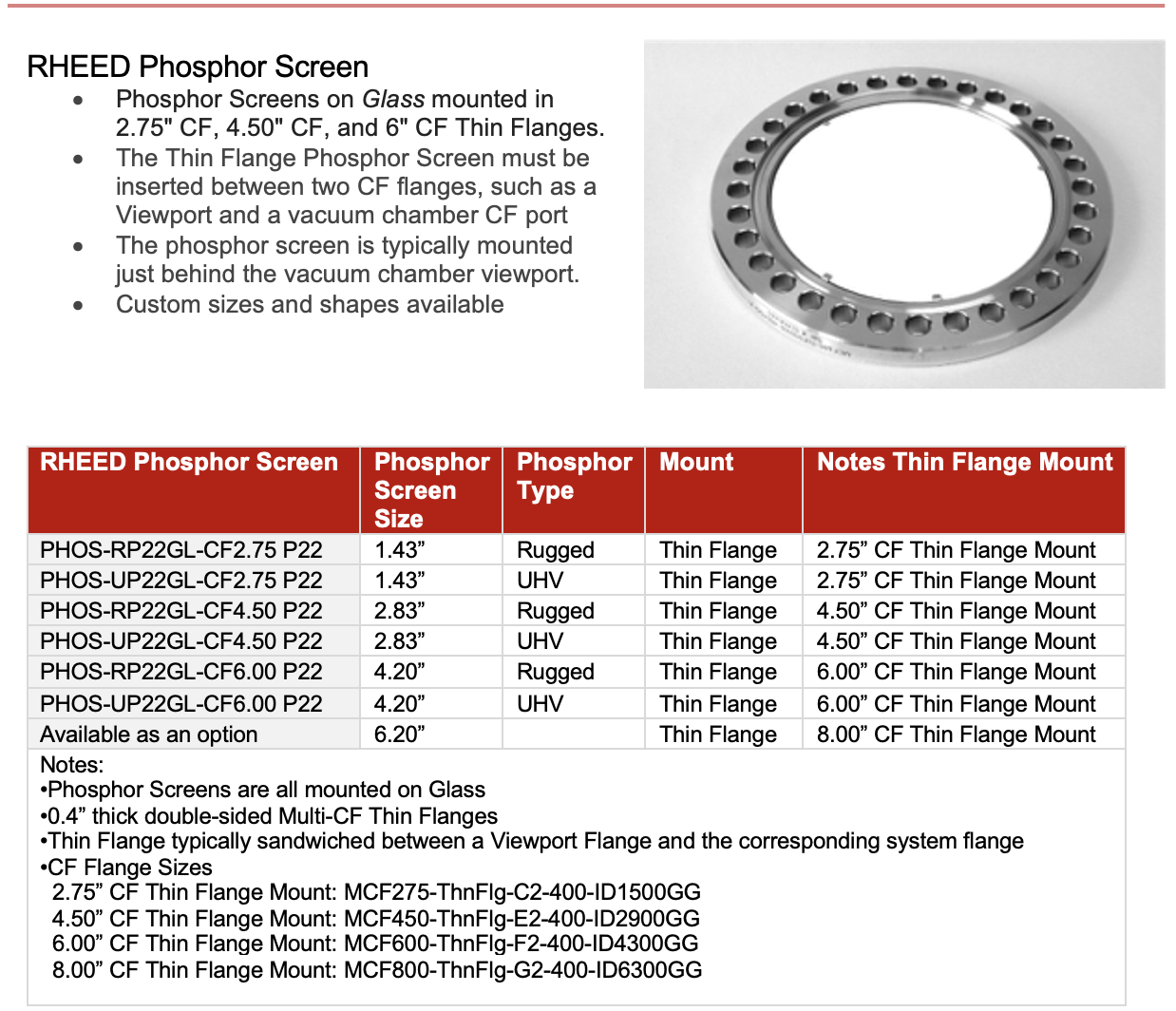
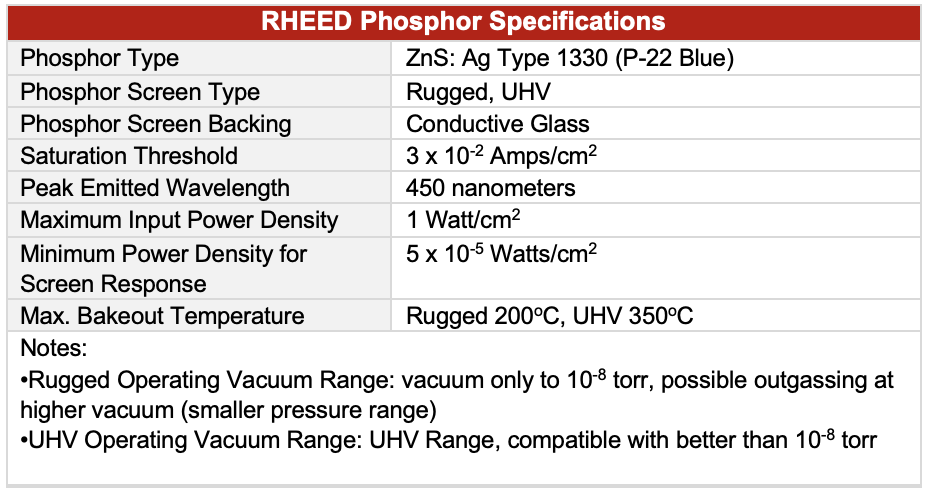
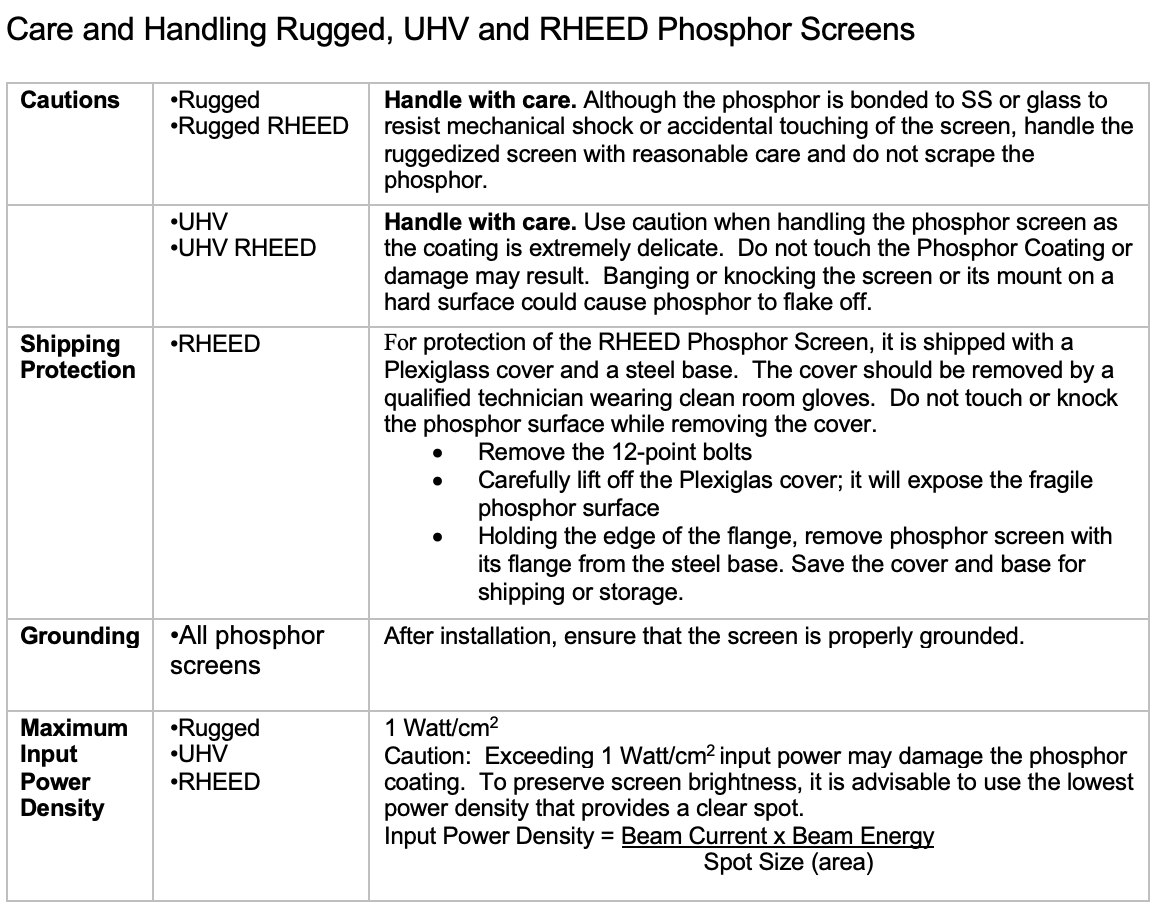
1) Using the phosphor screens at electron energies below the first unity-secondary-emission crossover point may cause the screen to charge up to electron cathode potential, at which point the screen temporarily goes out.
2) When using the phosphor screen, input power density should not exceed 1 Watt/cm2, or the phosphor coating may be damaged. To preserve screen brightness, it is advisable to use the lowest beam power density that provides a clear spot. Normal usage will result in gradual browning of the screen.
3) Ruggedized screens are bakeable up to 200°C; UHV screens are bakeable up to 350°C.
4) Larger screens, mounted in either six- or eight-inch viewports are also available as an option. The diameter of a screen for a six-inch viewport would be 4.2 inch and the diameter of a screen for a eight inch viewport would be 6.2 inch. These larger phosphor screens can be deposited on leaded glass if required.
5) Rugged screens on stainless steel can be deposited, as an option, directly on the eV square plate.
6) UHV screens on stainless steel is deposited on a round stainless steel plate that is affixed to the square mounting plate by four equally spaced tabs spot-welded to the square mounting plate and to the underside of the round (phosphor- coated) plate.
7) Standard phosphor screens deposited on conductive glass (both Rugged and UHV) are held between two stainless steel plates, within a center hole, by four equally spaced tabs on both sides of the screen. The tabs, which are spot-welded to the stainless steel plates, also serve to bleed off charge from the screens.
Detectors
Reference Document: Detectors_Phosphor_Screens_2024_0117
Copyright Kimball Physics 2024, ALL RIGHTS RESERVED